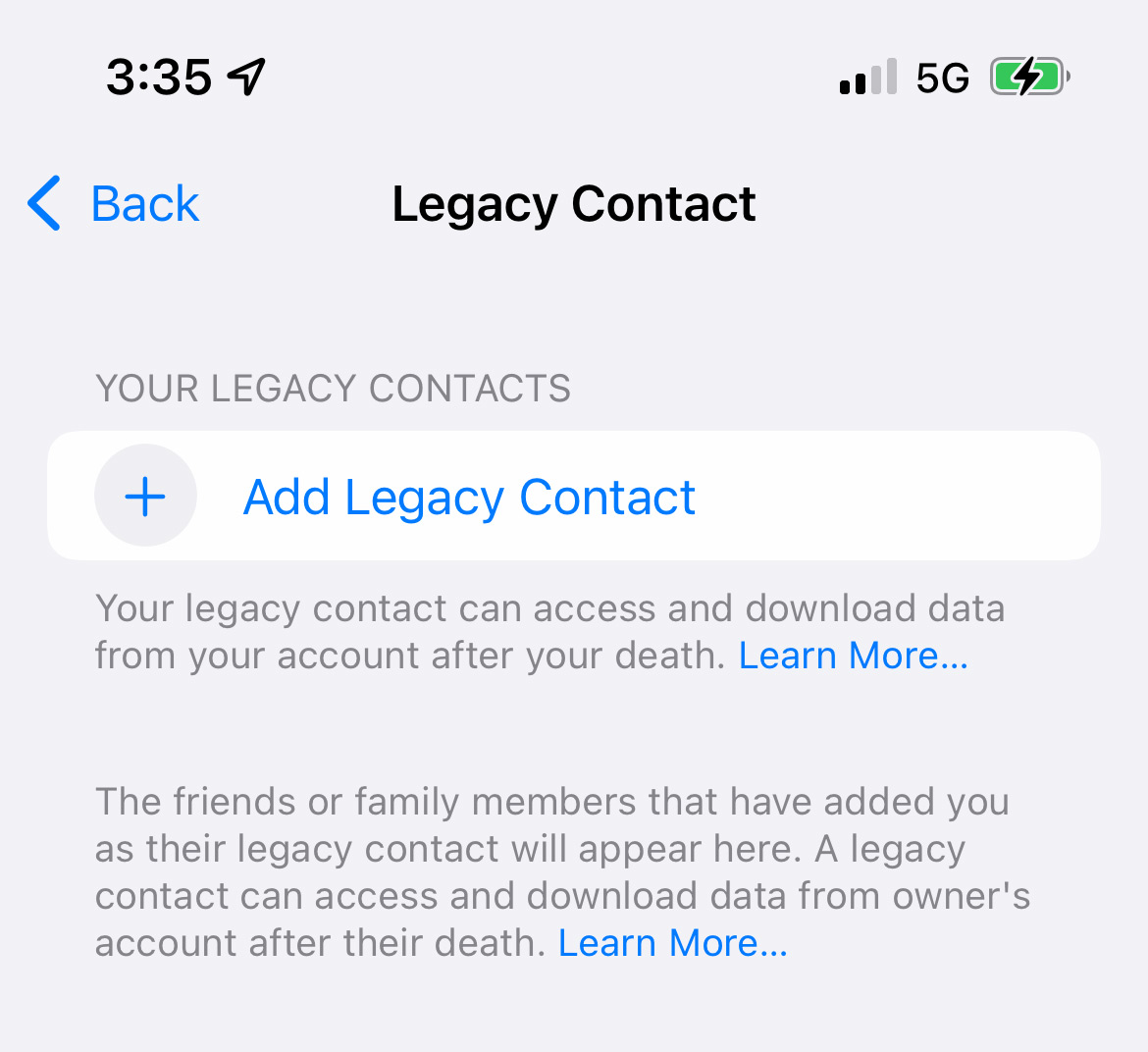Your Apple ID data now has a place to go when you die, provided you use Apple’s new Digital Legacy service to designate up to five people who can access all of your files after you pass into the great beyond.
Promised during Apple’s Worldwide Developer’s Conference in June, the Digital Legacy feature arrives today as part of the iOS 15.2 update (which also adds the Apple Music Siri-only plan). It's a simple idea to ensure that whatever data you’ve amassed from your years of using Apple devices and that’s stored under your Apple ID – and backed up to Apple’s cloud – isn’t lost forever when you die.
This is not like giving someone your iPhone PIN number. Since the assumption is that you’re no longer around to manage your affairs or retrieve important data, it’s full access to virtually everything stored with the ID. The list includes, among other things, iCloud-stored photos, notes, email, contacts, calendars, iCloud Drive files, backups, health data, and even Safari Bookmarks. Yeah, it’s a lot.
Apple does not let you choose what a Legacy Contact can and cannot see from your data. So maybe clean it up a bit right now.
How does it work?
There are now settings within iOS to identify up to five legacy data contacts who will receive a notification asking them if they accept. You’ll find out if they agree. Those that do get an access key that will store inside their own Apple ID settings.
If you die, the Legacy Contacts can enter the ID on Apple’s Digital Legacy page or through the iPhone's Legacy Contact page and access everything. They also must provide proof of your demise—meaning a death certificate.

Analysis: What happens when you're gone?
The question of what happens to our digital corpus when we die is by no means a new one. Facebook, for instance, lets loved ones create memorialized accounts for dead relatives, which is one way to preserve all Uncle Lou's "Cat plays piano" posts. Twitter will work with family members to convert control of accounts to estate holders (or deactivate them). Though, I think all bets are off if you didn’t designate an executor before you died.
However, the broader question of what to do with crucial data is one we are only beginning to grapple with. I suggest reading Digital legacy: Take Control of Your Online Afterlife, by Daniel Sieberg and Rikard Steiber, the founders of the digital legacy preservation platform GoodTrust. Their book explores the serious digital afterlife questions most of us now face, and how we’re probably not facing them at all.
"This is a much-needed feature both for Apple and its consumers. Trying to get your photos out of Apple iCloud, for a deceased loved one, is a mess today as consumers need to prove both that the deceased loved one has passed away, and that the requesting person is the legal beneficiary of the account. In many cases, Apple may require a court order instructing Apple to deliver photos owned by the deceased to the surviving family," said Steiber who serves as GoodTrust's CEO.
If you want to get started on identifying Legacy Contacts, you can follow these simple steps. However, I suggest you contact those family members first. No need to freak them out with discussions of your death—which we hope is not happening any time soon.
On your iPhone, open Settings and select your Apple ID at the top of the screen. Then select Password & Security, and the Legacy Contact. There, you’ll find the option to add new Legacy Contacts. These can be friends, family, or, I guess, anyone you want to designate that you trust with your digital legacy.
Those already using Apple’s Family Sharing will have an easier time adding Family members to the list. However, only family members over the age of 13 can access your account using a legacy key. It's also just as easy to remove your ex from your legacy Contacts. You follow the same path to Legacy Contacts, choose the contact name, and more options to remove them as a contact.
As I noted above, the key stores automatically on the legacy holder’s iPhone but if they're not using the latest version of iOS or on a different platform (Android, anyone?) you can print out the legacy key or make it a PDF and send it to them. They might also want to keep it somewhere secure (like a shared Safe Deposit Box).
After you access the account, you'll basically have to manage it like another active Apple ID, including 2-factor authentication for up to three years, at which point you'll lose access to the account and its data.
- Get the most out of iOS 15.2 with some of the best iPhone apps
from TechRadar - All the latest technology news https://ift.tt/3dPiGyM
EmoticonEmoticon